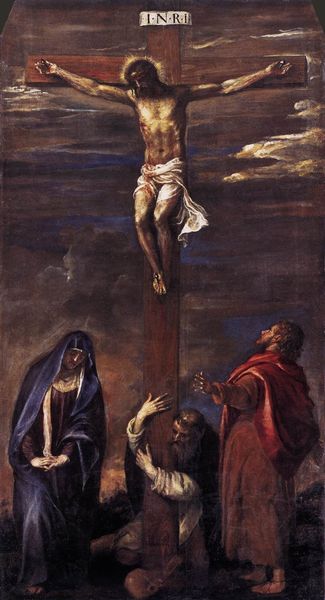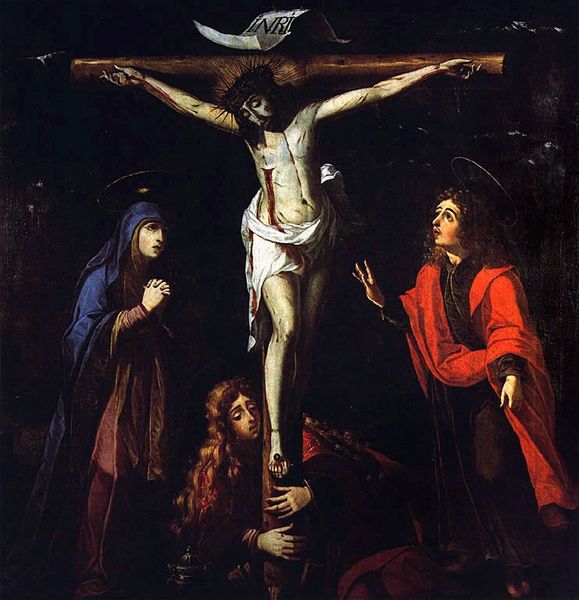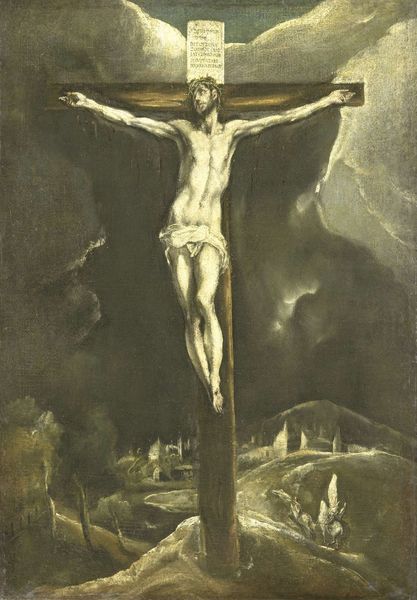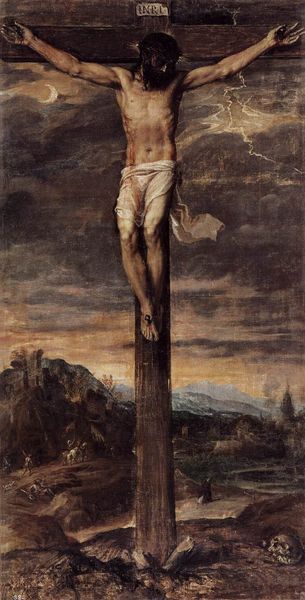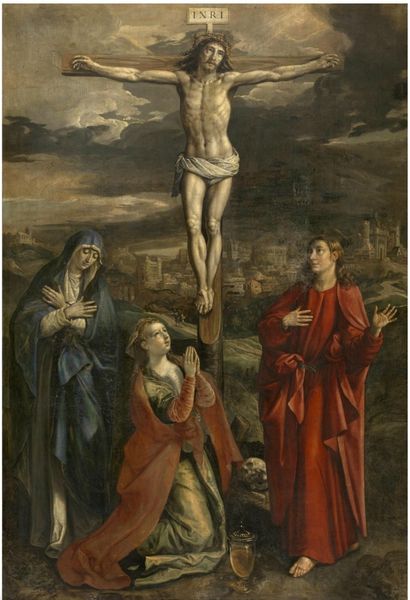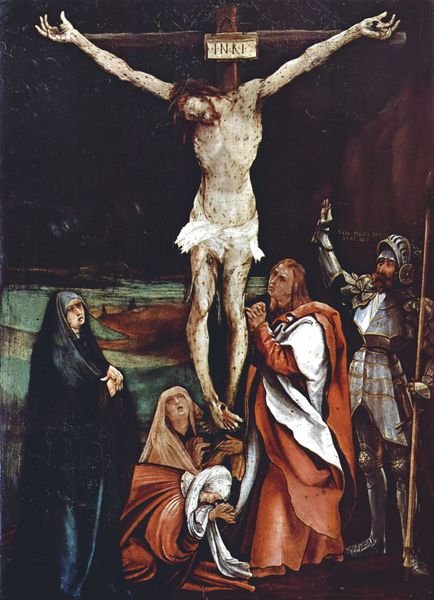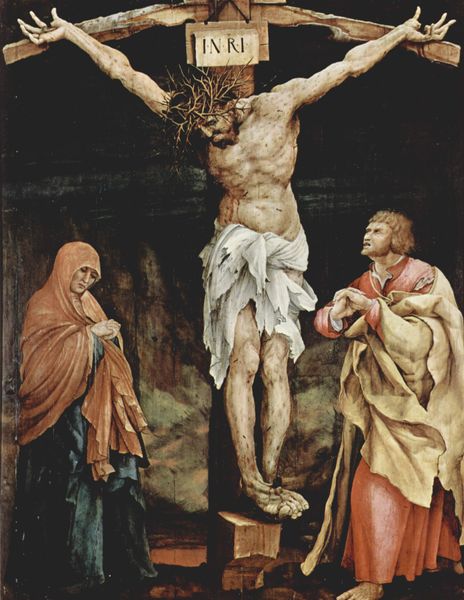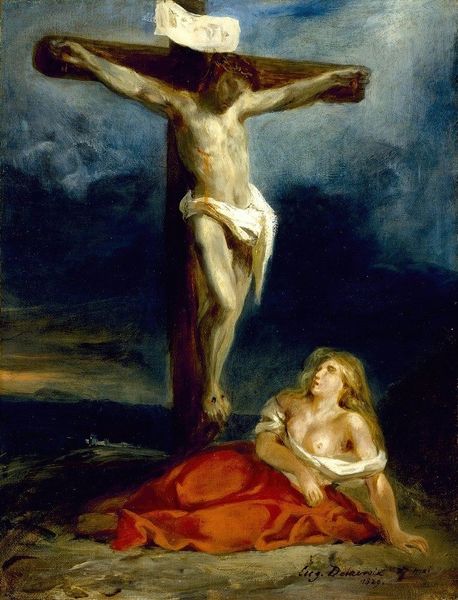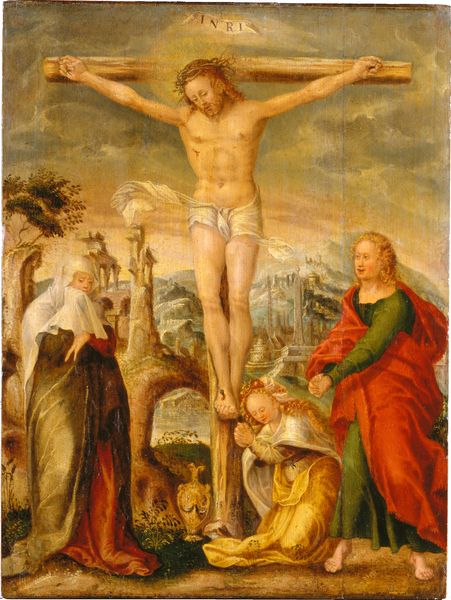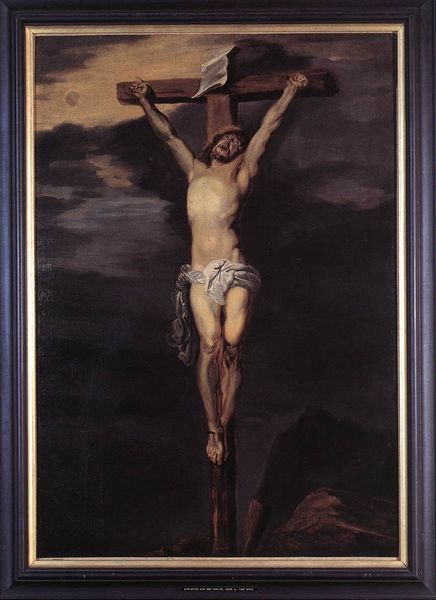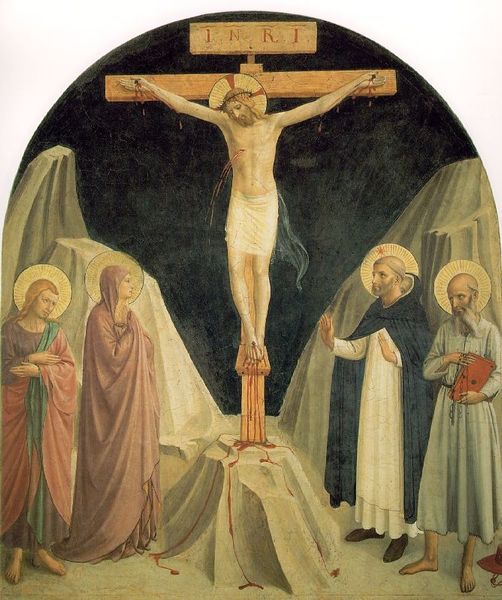
Dimensions: 305 x 165 cm
Copyright: Public domain
Curator: Paolo Veronese, painted "Crucifixion" around 1580. He captures a very particular moment in this work, relying primarily on oil paint to bring the scene to life. Editor: The colors are striking; almost dreamlike, if that makes sense given the subject. There’s this halo, these shimmering forms, hovering above Christ—an energy field around this central, pained figure. Curator: Precisely. Observe the composition. Veronese uses tenebrism, the pronounced contrast of light and dark, a key technique in Baroque painting, to direct the viewer's gaze towards the radiant figure of Christ against an otherwise dark sky. The strategic lighting amplifies the pathos. Editor: Pathos, right, like he's not just hanging there, he’s practically vibrating. Is that dramatic lighting, or something more? It feels… heightened. Curator: We might consider its historical context. The Venetian Renaissance evolved into something we now understand as the Baroque, embracing dynamism, intense emotion, and complex compositions, using chiaroscuro techniques to heighten drama, often featuring religious or mythological subjects with bold color palettes, exemplified by Veronese's mature style. Editor: It feels incredibly tactile too. Like I could reach out and feel the texture of that cloudy sky, or even that rough, wooden cross. Curator: Yes, the material treatment is very evocative. Also consider, though, the structural elements within. The asymmetry adds dynamism, disrupting conventional Renaissance balance for something more emotionally stirring. Veronese here plays with the familiar narrative and transforms it via innovative color use and daring compositional decisions. Editor: You know, seeing this painting makes you feel everything's connected, but also beautifully, tragically broken. I guess art does that sometimes—makes you feel completely at sea and anchored all at once. Curator: And Veronese accomplishes all of this with an undeniable artistic intelligence and skillful arrangement of pictorial elements, presenting, not just a historical event, but an exploration of human and divine drama through purely artistic terms. Editor: A final brushstroke of divine ambiguity then, painted across a scene both intimate and boundless. A compelling work.
Comments
No comments
Be the first to comment and join the conversation on the ultimate creative platform.
